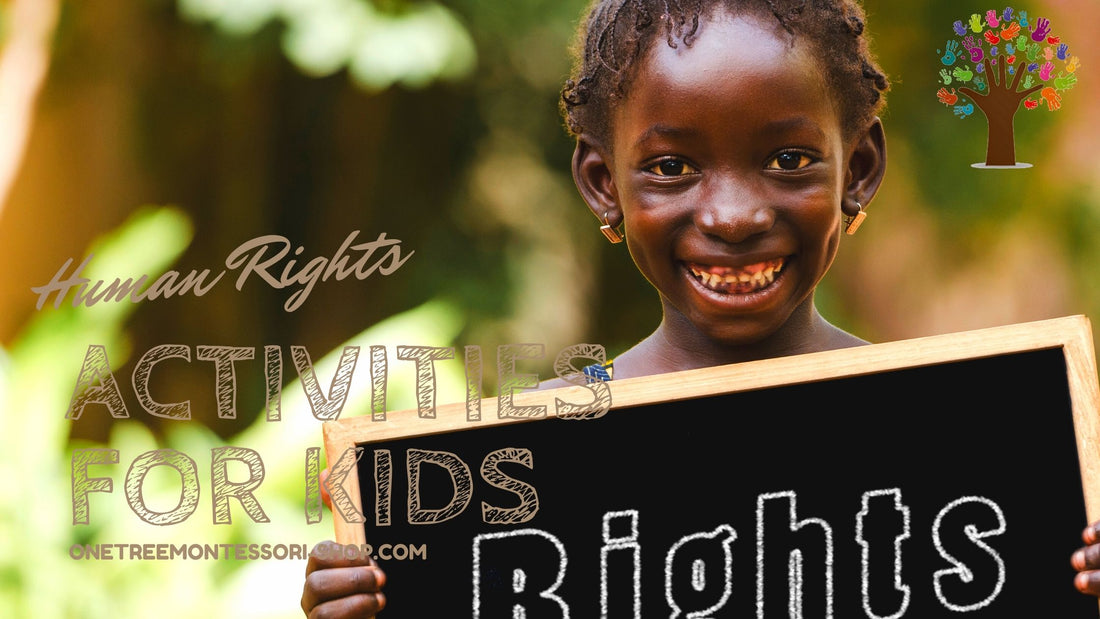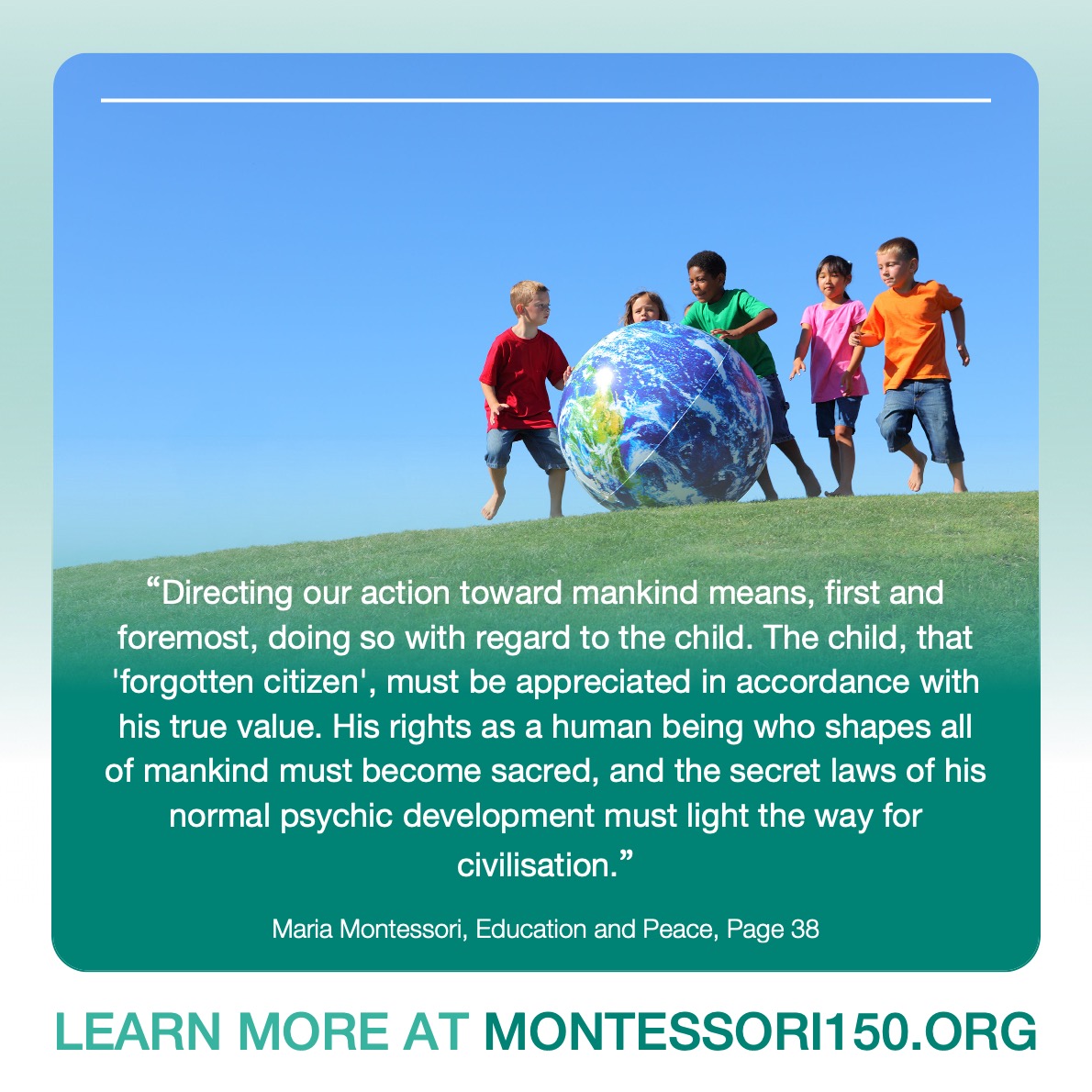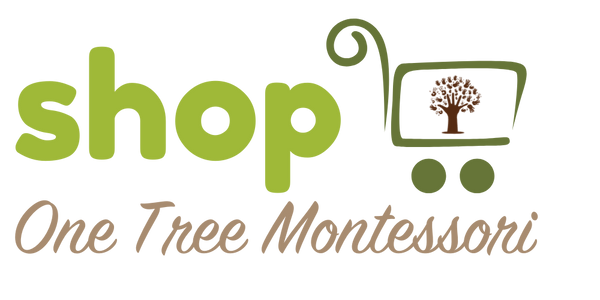
Celebrate Human Rights Day - Human Rights Activities for Kids
Share
What are human rights?
Human rights are universal principles that protect people’s dignity and life. Each person in the world has them, no matter where they live, what language they speak or what they eat for breakfast. You can read more here.
Human rights weren’t always a thing, though. When societies just started out, people only had to obey their ruler, who could pretty much do what he (or she) wanted. While the Greeks and Romans started thinking about human rights, it took Europe until the 1700s to seriously work on them.
Because of the patriarchal societies, men had many more rights than women during that time. Minorities were exploited and slavery was commonplace.
Towards the beginning of the 19th century, slavery had been abolished in most nations and women were granted more rights by governments. But all was not well in the world. Western society was divided into classes, races and other categories that were used to justify what we know as “human rights violations”.
It took the atrocities committed during World War 2 for the world to really wake up. In response, the United Nations declared a long list of Universal Human Rights in 1948. On 10 December each year, Human Rights Day is celebrated in most countries around the world.
While the Declaration recognises the moral principle of human rights – stating that they apply universally, no matter what anyone says – they shouldn’t be confused with civil rights, which are granted by governments in their laws and vary widely.
Even though much has been and is being done to promote awareness and protection of human rights, all is still not well in the world. It will take each one of us to educate our children on their rights so the world can truly change for the better.
List of Human Rights
The first step for this is awareness. Do you know all your human rights? The Universal Declaration of Human Rights (UDHR) has 30 articles that cover our rights in all aspects of life.
Check out this infographic for the basic human rights:

Here's a short video explaining the UDHR:
Every person has these rights, even if you don’t agree with them or don’t know them. If you know your human rights, you can start teaching them to your children (who have their very own declaration of rights from the UN, so be sure to read on!).
Human Rights for Kids
You would think that children shouldn’t need a separate section in an article on human rights. But unfortunately, many people across the world either still consider children as not-yet humans or don’t have the means to protect their rights.
During the 1980s, many people, organisations and governments worked together to create the Convention on the Rights of the Child. It was finally adopted in 1989, giving children unequivocal and special rights to ensure a holistic, healthy and fulfilled development.
Almost all countries of the world have adopted the Convention, in theory providing a cohesive and universal framework for governments to protect their children. In fact, only the United States has not ratified (made official) the Convention, although they did sign it.
The treaty sees children not as the property of their parents, or as charity cases, but as human beings in their own right; as individuals and members of their families and communities with rights and responsibilities relevant to their age and development.
It is, therefore, a holistic view of the child. Sound familiar?
Montessori & Human Rights for Kids
Dr Maria Montessori advocated for children’s (and women’s) rights long before they got worldwide attention (remember, she lived a good century before the Convention was adopted!).

“The only true freedom for an individual is to have the opportunity to act independently … there is no such thing as an individual until a person can act by himself.” —Maria Montessori, Education and Peace
In fact, of the 42 articles of the Convention at least seven are already intrinsic and important parts of the Montessori environment. (The wording of the articles is taken from ESF For Childrens Rights)
Article 2:
You have the right to protection against discrimination.
Because of the universal potential each child has, we respect them all. Every single one is seen as a unique individual worthy of our deepest, unconditional love.
Article 3:
An adult should always do what is best for you.
Using observations and scientific enquiry, Montessori teachers not only get to know each child in detail, they are also able to make founded decisions about what is “best” for them.
Article 5:
You have the right to be given guidance by your parents and family.
Dr Montessori recognized the family as vital for a child’s development. Montessori schools form tight connections with their families, often offering education programs, observation days or other information to help families guide their children.
Article 8:
You have the right to an identity.
Dr Montessori observed that children’s personality develops rapidly throughout the first three years. What she called the Spiritual Embryo is fully realised around age three, resulting in an individual with likes, dislikes and specific patterns of thought.
This identity is valued and fostered in a Montessori classroom, where the environment meets each child’s needs while celebrating their personal, cultural and unique identities.
Article 12 & Article 13
You have the right to an opinion and for it to be listened to and taken seriously.
You have the right to think and say what you think, through making art, speaking and writing, unless it breaks the rights of others.
Because we know that children develop their personality early on, and because of the love we have for their potential, Montessori teachers encourage children to speak their mind, even to argue a point – and help them learn to respect and consider the opinions of others, too.
Article 29:
You have the right to education which tries to develop your personality and abilities as much as possible and encourages you to respect other people's rights and values and to respect the environment.
Montessori in a nutshell. Need I say more?
Article 31:
You have the right to play and relax by doing things like sports, music and drama.
Being in a Montessori classroom is relaxing because the environment is set up to facilitate what psychologists call “flow”. Activities are engaging, challenging and fun. Being designed to meet developmental needs, the learning is hands-on and relevant.
Also, music and drama are a big part of a Montessori classroom: whether it’s the bells or tone bars, singing and dancing activities or grace & courtesy role plays, Montessori makes learning anything a leisure activity, not a chore.
Article 37:
You have the right not to be punished in a cruel or hurtful way.
There is no punishment in a Montessori classroom. The environment is set up to be consequential, and the guide makes sure that children know consequences, understand the choices they have and are supported when the result of their actions isn’t all that pleasant.
If you want to support Montessori education around the world, a good start is donating to Educateurs Sans Frontières (ESF), a division of the Association Montessori Internationale (AMI).
How to Talk to Your Kids About Human Rights
If you still need to know why Children’s Rights are important, read this bit on the UNICEF website.
The first step is to know and explore Human and Children’s Rights and what they mean to us. You can find some great resources to do this at the bottom of the post.
It’s important to emphasise that these rights apply unequivocally to all people across the world. Then, as your family or classroom encounters topics concerning Human Rights, open a respectful discussion about which rights may have been violated.
Talking about Human Rights can be tough because if you are privileged, you may not directly encounter many violations or feel very uncomfortable when you do see them. If you are poor, marginalized, differently abled, LGBTQ+, live in a war zone or in any other way are not part of the “lucky few”, it may feel as though there’s not much you can do to improve the situation and protect your and your children’s rights.
But knowing about them, answering tough questions honestly and appropriately and leading by example in protecting the rights of others is a good start. Remember, you don’t have to have all the answers – you can find out with your children!
Resources & Activities
And luckily, there are many great resources for learning about Human Rights, getting involved in protecting them and exploring how they affect our lives. Here’s my list – if you have suggestions, please leave a comment so I can review and add them!
Some of these links are affiliate links. If you purchase products or sign up to sites through them, I may receive commission or other perks at no extra cost to you – thanks!
Great Human Rights Books for Children
|
I am Me - Tristan Towns & Lacey Howard
|
Every Human Has Rights - National Geographic
|
|
Get Up, Stand Up - Bob Marley
|
The First Lady Who Fought For Human Rights - Baby Professor
|
|
I Know My Rights: A Children's Guide to the Bill of Rights and Individual Liberty - Rory Margraf
|
We Are All Born Free: The Universal Declaration of Human Rights in Pictures - Amnesty International
|
|
I Have the Right to be a Child - Alain Serres
|
A Life Like Mine: How Children Live Around the World - DK
|
Printables & Other Activities
Amnesty International has great activities about human rights for kids of varying ages:
Youth for Human Rights will send you a free Human Rights booklet!
Check out Games for Change if your children like video games.
Create a human rights calendar – you can find many great templates on Canva; just search for “monthly calendar). Each month, choose a particular article of either the Declaration or Convention to focus on.
Get involved with UNICEF’s Voices of Youth (especially teenagers).
Watch 7 Billion Others by Yann Arthrus Bertrand, who’s setting out to help people connect. So far, he and his co-authors have collected over 6,000 testimonials of people answering the same 40 questions. Get involved and upload your own video here.
This ABC Chapter has some great activities, including one called “Blind Trust”, which teaches responsibility and trust.
You can also check out World Mom’s Blog for more ideas on human rights activities!
Then, you can
- explore Human Rights through arts
- check out the Youth for Human Rights Education Package
- explore relevant resources from UNICEF
- get involved with Human Rights for Kids in the US, who are working to improve legislation for Children’s Rights
Videos
- a great way to get older children involved!
What are Child Rights?
Teaching Laws, Rights and Responsibilities to Kids
Celebrate Human Rights!
Children are individual humans worthy of more respect than many adults. Teaching kids about Human and Children’s Rights is important because children start life totally dependent – they need the best care because their early life experiences form their adult life.
They’re also the ones most strongly affected by a large number of government policies and legislation, and if these fail to take children into account, much money is spent on remedial fixes than would have been on ensuring their rights are met in the first place.
Don’t be complacent – teach your kids about their rights, right now!








